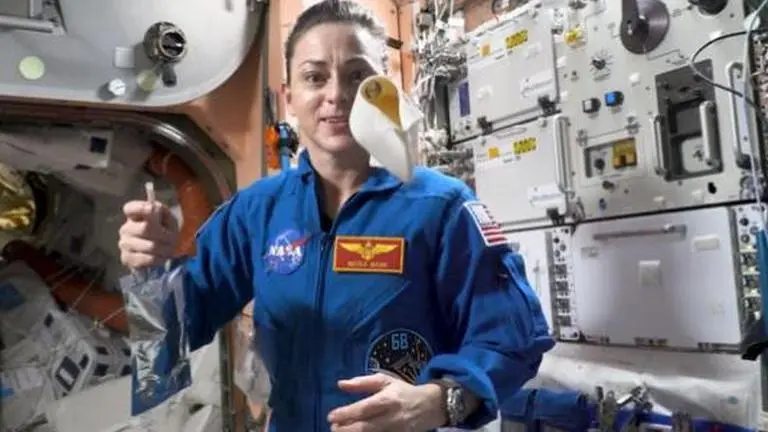Updated 18 March 2023 at 19:47 IST
ISS Astronaut makes cappuccino in special 'Space Cup', NASA explains science behind it
ISS is the platform for several experiments which are performed by NASA astronauts to improve life on Earth. One such experiments is developing a space cup.
- Science News
- 3 min read

The lack of gravity aboard the International Space Station (ISS) poses many challenges to the astronauts even in the most basic daily activities including sleeping or having a decent cup of coffee. While astronauts have no option other than to adapt to sleeping in micro-gravity, they have found a way to sip cappuccino similar to how they would on Earth.
This could be credited to the ongoing Capillary Beverage experiment which has revolutionised the way astronauts consume liquid in space. One instance was recently shared on the ISS Research Twitter handle. In a short video clip, NASA Astronaut Nicole Mann demonstrated how to make a 'classic cappuccino' in space using a specially made Space Cup.
Classic cappuccino, meet the space cup. ☕🤝
— ISS Research (@ISS_Research) March 2, 2023
This demo shows the Capillary Beverage investigation which studies the process of drinking from specially designed Space Cups that use fluid dynamics to mimic the effect of gravity. https://t.co/xFGFTva2Bw pic.twitter.com/M7TQmIwlrC
How does a Space Cup work?
Developing Space Cups is part of the Capillary Effects of Drinking in the Microgravity Environment (Capillary Beverage) experiment which involves making equipment that could facilitate drinking beverages in microgravity. Having visibly peculiar shapes, these cups mimic the role of gravity in normal drinking on Earth. NASA explains that rather than relying on gravity like on Earth, a Space Cup exploits the effects of surface tension, wetting, and container geometry in a manner that mimic the role of gravity.
"The objectives of the tests are to demonstrate cup geometries that exploit capillary forces enabling crew members to drink a variety of aqueous drinks in space, from simple fluids like water and juice to more complex fluids such as cocoa, coffee, espresso, and fruit smoothies," says NASA.
Advertisement
Broader applications of Space Cups
The applications of Space Cups are currently limited to space because they are too small to be of practical use here on Earth. However, "their design is relevant to several fields that use microfluidics, including medical research and drug delivery," says NASA. Notably, many experiments that are carried out aboard the ISS are done with the ultimate aim of improving life on Earth. Some of the other potential revolutionising are developing detergents in space and exploring methods of growing aeroponic plants without the usage of soil to ensure food security on Earth. There are several medical experiments as well one of which is the 3D printing of tissues to heal injuries.
Published By : Harsh Vardhan
Published On: 17 March 2023 at 21:24 IST
